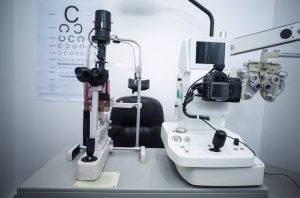All Categories
Featured
Table of Contents

The realm of vision correction is quickly advancing, driven by groundbreaking technological advancements that are improving exactly how we perceive and treat eye health. From laser surgeries to ingenious eyeglasses, the alternatives readily available today are not just much more efficient however also accommodate the distinct demands of each individual. In this blog site, we will certainly explore just how modern technology is boosting vision adjustment options, causing enhanced person results and complete satisfaction.
1. Laser Innovation Innovations.
At the forefront of vision modification modern technology are innovative laser procedures like LASIK and PRK. These approaches have actually been reinvented by the intro of femtosecond lasers, which produce accurate and regulated cuts in the cornea, lessening pain and boosting healing time.The most up to date developments, such as topography-guided LASIK, permit for a personalized treatment plan that makes up the one-of-a-kind curvature of a person's cornea. This degree of personalization not just increases the precision of the treatment yet additionally reduces the risk of issues, leading to more clear vision post-surgery.
2. Smart Get In Touch With Lenses.
The development of wise contact lenses stands for a considerable leap in vision adjustment modern technology. These lenses can monitor numerous wellness specifications, such as glucose levels in diabetics or intraocular pressure for glaucoma patients.By incorporating sensing units into the lens layout, manufacturers are producing an item that surpasses vision modification, supplying important health details in real-time. As research study in this field advances, smart get in touch with lenses can possibly transform how we manage eye wellness and conditions connected to vision.
3. Advanced Intraocular Lenses (IOLs)
For patients undergoing cataract surgical procedure or seeking solutions for presbyopia, advanced intraocular lenses have actually ended up being a game-changer. Today's multifocal and toric IOLs are created to offer clear vision at multiple ranges, decreasing dependancy on glasses for everyday activities.New innovations enable the modification of IOLs based on specific way of lives and aesthetic demands. For example, suiting IOLs can change their emphasis based upon the eye's position, supplying a much more all-natural aesthetic experience. These advancements ensure that people take pleasure in far better aesthetic end results after surgery, boosting their lifestyle.
4. Telemedicine and Remote Tracking.
The COVID-19 pandemic increased the adoption of telemedicine, and this pattern has actually expanded right into eye care. Individuals can now seek advice from with eye treatment experts from the comfort of their homes, going over signs and symptoms and treatment options without the requirement for in-person brows through.Remote tracking devices that connect to smartphones or tablet computers enable people to track their eye health and wellness and vision adjustments in time. This information can be shown medical care suppliers, guaranteeing prompt treatments and personalized treatment plans. The convenience and ease of access of telemedicine are specifically advantageous for individuals with mobility challenges or those residing in rural areas.
5. Expert System in Eye Care.
Expert system (AI) is progressively ending up being an essential part of eye treatment. AI algorithms are made use of to examine big sets of information, allowing very early discovery of problems like diabetic person retinopathy and macular degeneration with retinal imaging.AI can assist eye care professionals by highlighting abnormalities that may need additional investigation, enhancing analysis accuracy and effectiveness. By streamlining the analysis procedure, AI not only improves client care yet additionally permits more prompt treatment interventions.
6. Personalized Glasses Solutions.
The surge of tailored glasses has actually transformed just how individuals come close to vision improvement. Advanced 3D printing modern technologies make it possible for the development of tailored structures and lenses customized to a client's special facial structure and vision requirements.Along with aesthetic benefits, customized glasses enhances comfort and effectiveness. Patients can currently pick from numerous lens alternatives, including blue light barring, photochromic, and high-index lenses, guaranteeing they discover the perfect solution for their lifestyle and visual choices.
Conclusion.
Technology is significantly changing vision modification choices, leading to better end results and raised complete satisfaction for clients. As these technologies continue to progress, people can anticipate a more tailored and effective approach to vision modification, inevitably boosting their quality of life.Latest Posts
Experience Coastal Style at Deauville Inn
Published Apr 19, 25
1 min read
A Historic Shoreline Destination with Modern Thrills
Published Apr 11, 25
1 min read
A Historical Coastline Destination with Modern Thrills
Published Apr 10, 25
1 min read